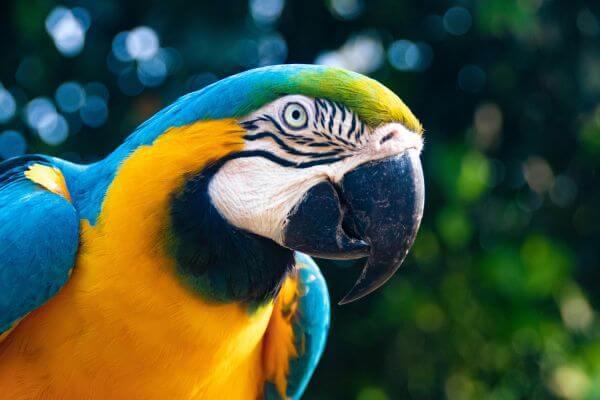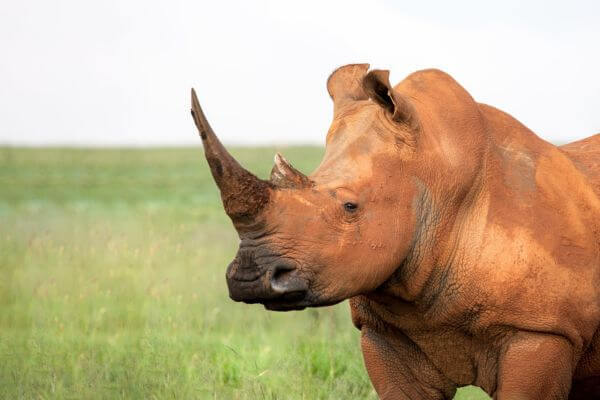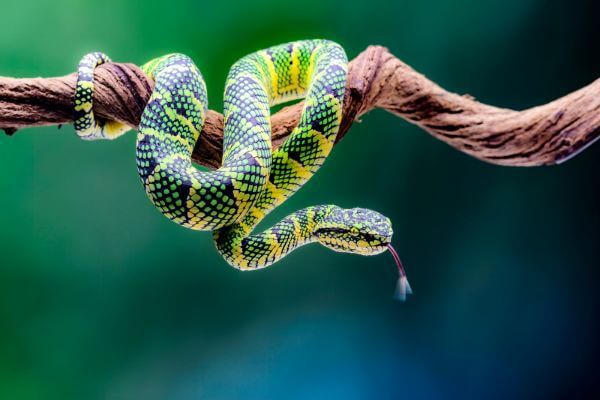Explore the curiosities of the animal world and uncover fascinating facts about our four-legged friends.
Surprising Facts from the Animal Kingdom

Animals possess incredible characteristics that often go unnoticed. For example, did you know that dogs have a sense of smell 40 times more sensitive than humans? This is due to millions of extra olfactory receptors they have, making them excellent sniffers. This ability is often used in search and rescue tasks.
Another interesting fact is that dolphins have their own names. They identify themselves through unique whistles used to communicate with each other. This shows a high level of intelligence and socialization. Dolphins are known for their ability to learn commands and perform tricks, which is evidence of their incredible intelligence.
Additionally, owls have extraordinary hearing. Their asymmetrical ears allow them to locate prey in complete darkness. They are nocturnal predators that rely on precise hearing to hunt. Owls are fascinating not only for their hunting ability but also for their silent flight.
Dogs and Their Incredible Abilities

Dogs are known for their loyalty and intelligence. They can be trained to perform various tasks, from fetching objects to helping people with disabilities. Using positive reinforcement is the most effective way to train a dog. This means rewarding desired behaviors with treats or praise, making the learning process more enjoyable for the animal.
Moreover, some dog breeds possess specific impressive abilities. For instance, the German Shepherd is often used in police work due to its agility and ability to follow complex commands. These characteristics make them exceptional working dogs, demonstrating how genetics and training can shape a dog’s behavior.
Interestingly, dogs also have an incredible ability to understand human emotions. They can sense when their owners are sad or happy and often adjust their behavior accordingly. This natural empathy makes dogs ideal companions for many people.
Marine Animals and Their Unique Adaptations
Marine animals exhibit some of the most impressive adaptations in the animal kingdom. For example, octopuses are masters of camouflage. They can change the color and texture of their skin to blend in with their surroundings, escaping predators. This ability not only allows them to avoid predators but also helps them capture unsuspecting prey.
Another fascinating example is the hammerhead shark. This predator has a hammer-shaped head that provides stereo vision. This means it can see in 360 degrees, which is extremely useful for hunting. Additionally, their ampullae of Lorenzini allow them to detect electric fields generated by prey.
Lastly, humpback whales are known for their complex and melodious songs. These sounds can travel long distances underwater and are used for communication and possibly attracting mates. Whale songs are so distinctive that researchers can identify individual whales by their “voice.”
Surprising Animal World Curiosities
The diversity of the animal world is fascinating and full of curiosities. For example, did you know that crows are incredibly intelligent? They can use tools and solve complex problems. Additionally, they have an impressive memory, remembering human faces and holding grudges against those who harm them.
Elephants are also extraordinary animals. They have an incredible memory and can recall locations of water and food even after many years. Elephant communication is also fascinating; they use low-frequency sounds, inaudible to humans, to communicate over long distances.
Lastly, bees have a highly developed communication system. They perform a “dance” to inform other bees about the location of flowers. This coordinated and efficient behavior shows how animal life is full of sophisticated strategies for survival and success.
Unique Adaptations of Wild Animals
Wild animals have incredible adaptive abilities that allow them to survive in hostile environments. For example, chameleons not only change color to camouflage but also to regulate their body temperature. This ability allows them to thrive in various habitats, from tropical forests to arid deserts.
Another fascinating example is the ability of spiders to weave complex webs. Each spider species produces silk with unique properties, adapted to their specific needs. Some webs are sticky to catch insects, while others are more resilient to support the spider’s weight and its prey.
Ants also exhibit impressive cooperative behavior. They work in highly organized colonies where each ant has a specific role. Their ability to build complex structures and efficiently find food is a testament to their adaptability and collective intelligence.
Animal Communication: Sounds and Signals
Communication in the animal kingdom is extremely diverse and fascinating. For example, wolves howl to coordinate hunts and mark territory. This sound can be heard over long distances and is an effective way to maintain group cohesion. Howling also serves to strengthen social bonds among pack members.
Birds also use a wide variety of sounds to communicate. Some species, like parrots, can mimic sounds and even human speech. This ability is used to attract mates and defend their territory from intruders. The complexity of bird vocalizations is a fascinating field of study for biologists.
Additionally, many animals use visual signals for communication. For example, peacocks display their colorful tails to attract females. This behavior is an example of sexual selection, where showy traits indicate the health and genetics of the individual. Vibrant colors and complex patterns are powerful signals in the animal world.
Positive Reinforcement in Dog Training
Using positive reinforcement in dog training is highly effective. This technique involves rewarding the dog for desired behaviors, encouraging the repetition of those behaviors. Rewards can be treats, toys, or praise. This approach creates a positive association for the dog, making training a pleasant experience.
Consistency is important when applying positive reinforcement. Commands should be clear, and rewards should be immediate so the dog understands which behavior is expected. Patience is also crucial, as each dog learns at its own pace.
Positive reinforcement not only improves the dog’s behavior but also strengthens the bond between the owner and the animal. Dogs trained this way tend to be happier and more confident. They learn to trust their owners and are more willing to follow commands. This technique is widely recommended by trainers and veterinarians due to its benefits.
Curious Facts About Big Cats
Big cats are some of the most fascinating predators in the world. Tigers, for example, are excellent swimmers and often cool off in rivers and lakes. This ability is unique among big cats and demonstrates the tiger’s adaptability to different environments.
Lions, on the other hand, are known as the “kings of the jungle” due to their position at the top of the food chain. They live in groups called prides, where females are responsible for hunting. The coordination during the hunt is impressive and demonstrates the intelligence and teamwork of lions.
Leopards are masters of stealth. They can carry prey weighing up to three times their body weight into trees. This ability allows them to avoid competition with other predators and ensure a safe meal. Leopards are solitary and rely on camouflage to approach their prey.
Marine Animals: Curiosities and Adaptations
Marine animals present some of the most fascinating adaptations in the animal kingdom. For example, sharks have teeth that regenerate continuously throughout their lives. This ensures they are always ready to hunt, even if they lose teeth in combat or while feeding.
Octopuses, in addition to their impressive camouflage, have the ability to regenerate their tentacles. If a tentacle is lost, it can grow back, complete with nerves and muscles. This ability is crucial for their survival, allowing them to escape predators and continue hunting.
Whales, particularly blue whales, are the largest animals on the planet. They can grow up to 30 meters in length and weigh up to 200 tons. Despite their colossal size, they mainly feed on small organisms called krill. Their ability to filter large amounts of water to capture food is an impressive adaptation.
Pets and Their Fascinating Facts

Pets are part of many people’s lives and possess fascinating curiosities. Cats, for example, have an extraordinary sense of balance. This is due to their inner ear, which allows them to almost always land on their feet. This ability is known as the “righting reflex.”
Rabbits are another interesting example. They have teeth that never stop growing. To keep their teeth at a manageable size, rabbits need to constantly chew. This adaptation is essential for their survival in the wild and is something rabbit owners should consider when providing chew toys.
Additionally, hamsters have cheek pouches to store food. They can fill these pouches with a surprising amount of food to take back to their nests. This behavior is an adaptation that allows them to collect and store food efficiently.
The Importance of Positive Reinforcement

Positive reinforcement is an essential technique in dog training. Using treats and praise to reward desired behaviors creates a positive association. This makes the learning process more effective and enjoyable for both the dog and the owner. Positive reinforcement should be consistent so the dog clearly understands which behaviors are rewarded.
Moreover, it’s important to use a variety of rewards. Different dogs may respond better to different types of incentives. For example, some dogs may prefer toys over treats. Understanding what motivates your dog is crucial for successful training.
The benefits of positive reinforcement go beyond training. This technique strengthens the bond between the owner and the dog, promoting a relationship based on trust and mutual respect. Dogs trained with positive reinforcement tend to be happier, more confident, and more obedient.
Fascinating Animal World Facts
The animal world is full of fascinating curiosities that surprise and delight. From the olfactory abilities of dogs to the camouflage of octopuses, each species has unique characteristics that ensure their survival. Using positive reinforcement in dog training is an effective technique that improves behavior and strengthens the relationship between humans and animals.
Marine Animal World Curiosities, such as sharks and whales, exhibit incredible adaptations that allow them to thrive in underwater environments. However, it is in our own homes that we find some of the most interesting curiosities. Cats with their sense of balance and rabbits with their constantly growing teeth are perfect examples of how evolution has shaped remarkable abilities.